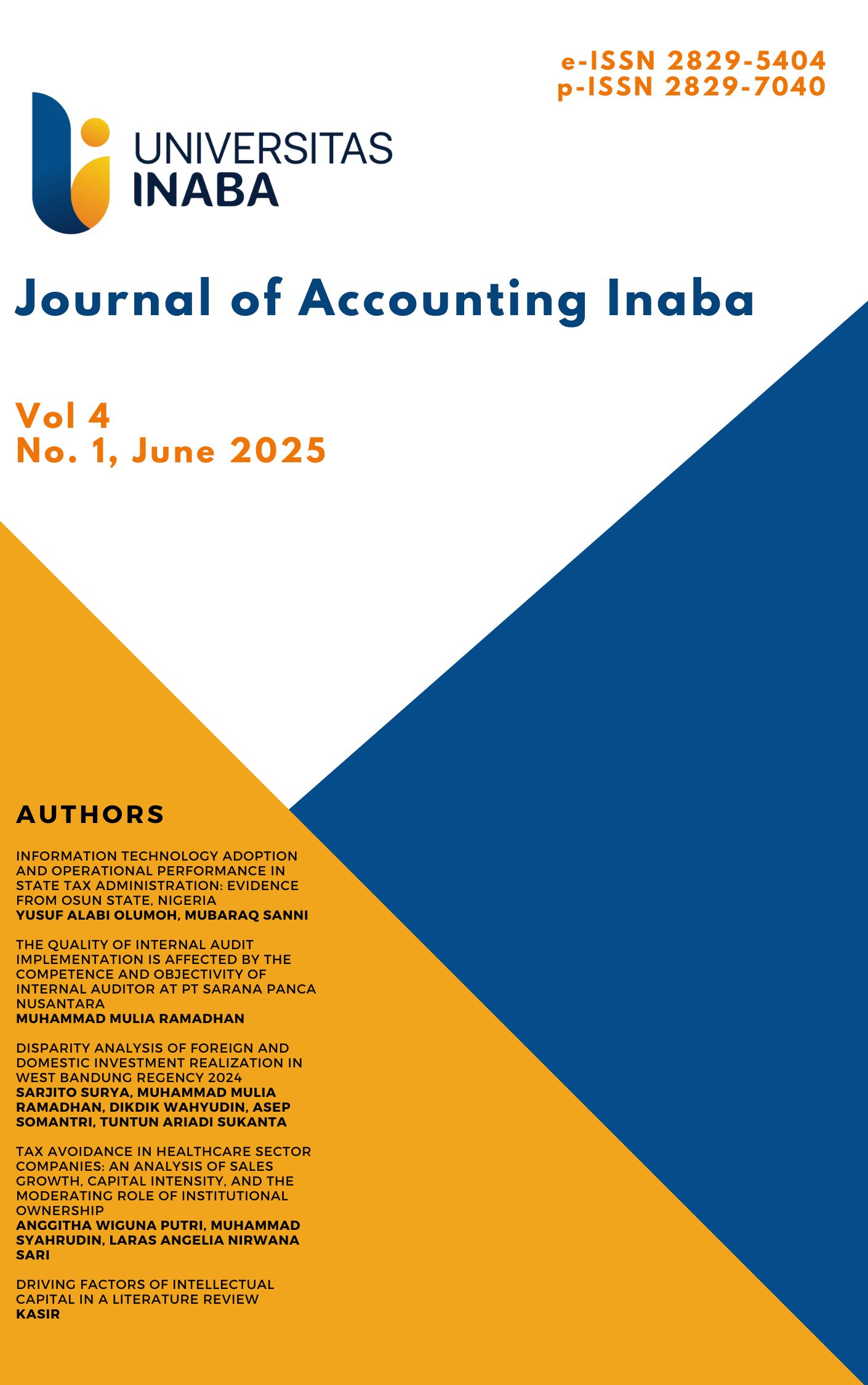Disparity Analysis Of Foreign And Domestic Investment Realization In West Bandung Regency 2024
DOI:
https://doi.org/10.56956/jai.v4i1.430Keywords:
investment disparity, FDI, DDI, Lorenz curve, West Bandung RegencyAbstract
This study aims to analyze the disparity in the realization of Foreign Direct Investment (FDI) and Domestic Direct Investment (DDI) across subdistricts in West Bandung Regency in 2024. Investment plays a vital role in supporting regional economic development; however, its distribution tends to be uneven, potentially widening interregional development gaps. This research uses a quantitative descriptive approach, employing secondary data sourced from regional investment reports. To measure investment disparity, the Lorenz Curve is applied, providing a visual representation of inequality in investment distribution among subdistricts. The analysis reveals a notable disparity in both FDI and DDI realization, with investment concentrated in specific subdistricts that possess better infrastructure, accessibility, and economic facilities. These findings highlight the urgency for more inclusive and regionally balanced investment policies to reduce spatial inequality and promote equitable development in West Bandung Regency.
References
Khan, M. S., Siddique, A. B., Khan, M., Salar, A., Bakkar, S. 2021, & Bhattacharya, J. (2021). Spatial Analysis of Regional and Income Inequality in the United States. Economies 2021, Vol. 9, Page 159, 9(4), 159. https://doi.org/10.3390/ECONOMIES9040159
Maichal, M., Alfan, M., & Ramadhan, R. (2024). Economic openness and regional inequality in Indonesia: A spatial panel approach. Journal of Regional Economics, 17(3), 201–218. https://doi.org/10.xxxx/jre.2024.17.3.201
Maket, I., Kanó, I. S., & Vas, Z. (2023). Urban Agglomeration and Income Inequality: Is Kuznets Hypothesis Valid for Sub-Saharan Africa? Social Indicators Research, 170(3), 933–953. https://doi.org/10.1007/S11205-023-03222-6/TABLES/3
Nopiah, R., Barika, B., & Septriani, S. (2024). Analysis of Inequality Structure and Its Correlation With Government Expenditure : A Study of Western Indonesia. International Journal of Economics, Management and Accounting, 1(4), 450–468. https://doi.org/10.61132/IJEMA.V1I4.295
OECD. (2022). OECD Economic Outlook 2022 (Issue 22). OECD. https://doi.org/10.1787/F6DA2159-EN
Paningrum, D. (2022). BUKU REFERENSI INVESTASI PASAR MODAL. https://sites.google.com/view/penerbitcandle
Rahmawati, T., & Haryanto, T. (2020). Analisis sebaran investasi PMA dan PMDN di Provinsi Jawa Barat. Jurnal Regional dan Kota, 12(2), 101–115.
Soeharjoto, S. (2020). FACTORS THAT AFFECT INEQUALITY DISTRIBUTION INCOME IN CENTRAL JAVA. International Journal of Economics, Business and Accounting Research (IJEBAR), 4(03). https://doi.org/10.29040/IJEBAR.V4I03.1196
Syafitri, R., Endang, S., & Susilo, T. (2025). Determinants of income inequality: The role of local democracy and gender gaps in Indonesia. Socio-Economic Review Indonesia, 9(1), 33–49. https://doi.org/10.xxxx/seri.2025.9.1.33
UN-Habitat. (2020). World Cities Report 2020: The Value of Sustainable Urbanization. https://unhabitat.org/sites/default/files/2020/10/wcr_2020_report.pdf
United Nations Conference on Trade and Development. (2024). World Investment Report 2024.
World Bank Group. (2025). Gini index - Indonesia | Data. https://data.worldbank.org/indicator/SI.POV.GINI?locations=ID
Yulianti, N., & Nugroho, R. (2021). Distribusi spasial investasi dan dampaknya terhadap pembangunan berkelanjutan di Kabupaten Sleman. Jurnal Ekonomi dan Kebijakan Pembangunan, 10(1), 65–78.









